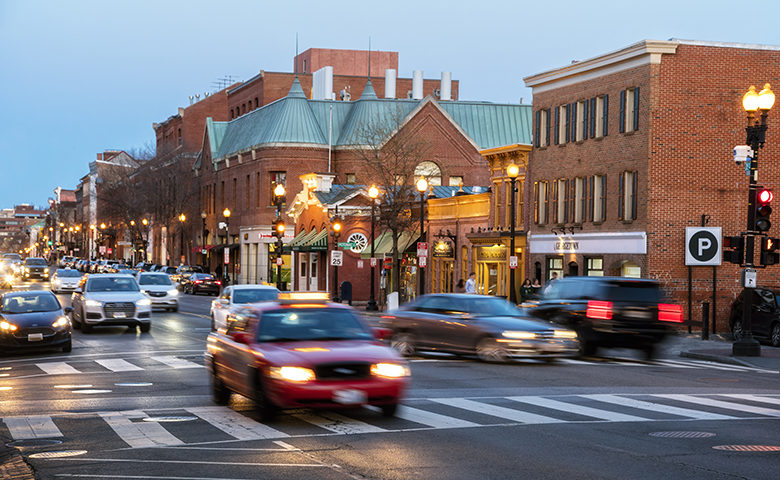There’s no question that driving is a dangerous activity. But despite the massive amount of hazardous energy involved in driving, most people are quite comfortable getting behind the wheel without fear. Unless you’ve recently experienced a close call or an accident, your driving-related judgment is likely clouded by complacency to the extent that you’re not fully conscious of the dangers you face behind the wheel.
Complacency is hard to recognize when it affects you in the moment, but you can often see it in other drivers’ actions like speeding, following too closely, automatically changing lanes, and engaging in common distractions like tuning the radio or drinking coffee.
Scanning intersections is an important safety-related habit that should be a standard procedure but that can fall by the wayside thanks to complacency. You’d be amazed by how many people are lulled into a false sense of security and proceed through an intersection without scanning because they have the right of way.
A green light for you doesn’t necessarily mean all of the traffic approaching their red light is going to stop. It’s important to do an LCR (left-center-right) scan every time you approach an intersection, regardless of whose right of way it is. Notably, failure to stop for a red light/other traffic control is the most common cause of urban crashes, according to the Federal Highway Administration.
And if you think that you can ignore this warning because it’s common sense, think again. According to an NHTSA study Crash Factors in Intersection-Related Crashes: An On-Scene Perspective, 96% of incidents at intersections are due to driver error—and 44% are because drivers fail to survey the intersection properly. Physically moving your head from side to side (without actually focusing your eyes) while singing along with your favorite tune doesn’t count. Your intersection-scanning habit needs to engage your mind not just go through the motions. Looking without seeing can easily happen when you’re complacent enough to allow your mind to wander.
Thinking about other drivers’ actions will help you focus on your own driving and avoid accidents (especially those that aren’t your fault). Getting in the habit of actively scanning the intersection can make you think about risks you might encounter in other places along the drive. It can also help you recognize and avoid a potential incident.
It’s also a good idea to pay attention to vehicles approaching you from the opposite direction—one moment of inattention on their part could cause them to strike you. This is much easier to avoid if you proactively watch other drivers to ensure they are slowing for the intersection.
Another danger comes in the form of navigation systems. GPS diminishes a driver’s need to navigate on their own. As a result, some drivers almost go into a trance-like state, allowing the hypnotic voice to lull them into autopilot.
With all of that said, here are several habits you can work on to avoid complacency on the road.
Pre-plan your route
Pre-planning your trip can get any driver in the right headspace and help them anticipate risks they’ll encounter along their route. It’s also a habit that can keep drivers safe 24/7—whether they’re driving for work or pleasure. Apps like Google Maps and Waze allow drivers to see real-time traffic conditions, making route planning much easier by knowing where to avoid high-traffic areas or slowdowns due to construction.
Start with safety in mind
Scanning intersections is one habit that can reduce the risk of incidents, but there are many others too. Some companies have policies to encourage safe driving habits. Pre-startup inspections, circle checks and pre-shift meetings or toolbox talks are great ways to encourage safe actions behind the wheel. Communicating the importance of avoiding driving-related risks like distraction and complacency before a shift begins is a great way to strengthen the company culture and combat human error.
Pay attention to the signs
When you’re not going through a lot of intersections you can switch your active scanning habit to paying closer attention to the road signs encountered on a drive where specific risks can be brought back into perspective. Deer crossing signs are a good example of this. You’re often not thinking about deer jumping out in front of you while you’re cruising along the roadway. But once you see that sign, it should alert your brain to pay attention to your surroundings. Pedestrian crossing signs, change of speed limit or stop sign ahead signs have the same effect—but only if people are paying attention to them. The big theme here is the need to be alert to our surroundings.
Scanning intersections—every time you approach them—is a great habit to fight complacency and bring your mind back to the safety risks associated with driving. It can also combat some of the human factors that creep in while driving like fatigue, rushing and frustration because drivers that have their minds tuned to scanning for risks are more alert and able to process impending hazards. By getting yourself and others in the habit of scanning intersections, you will be making everyone safer in more ways than one—tackling work-related driving safety issues and effectively dealing with distraction, human error and injuries.

